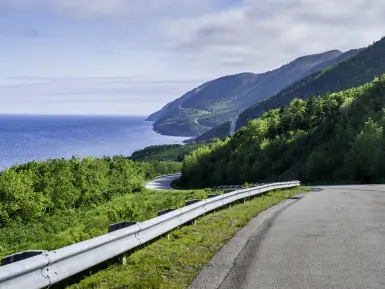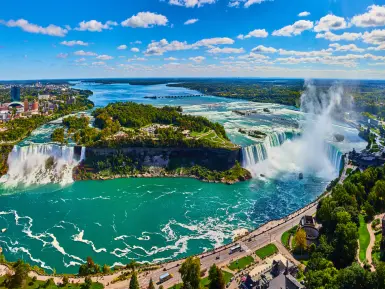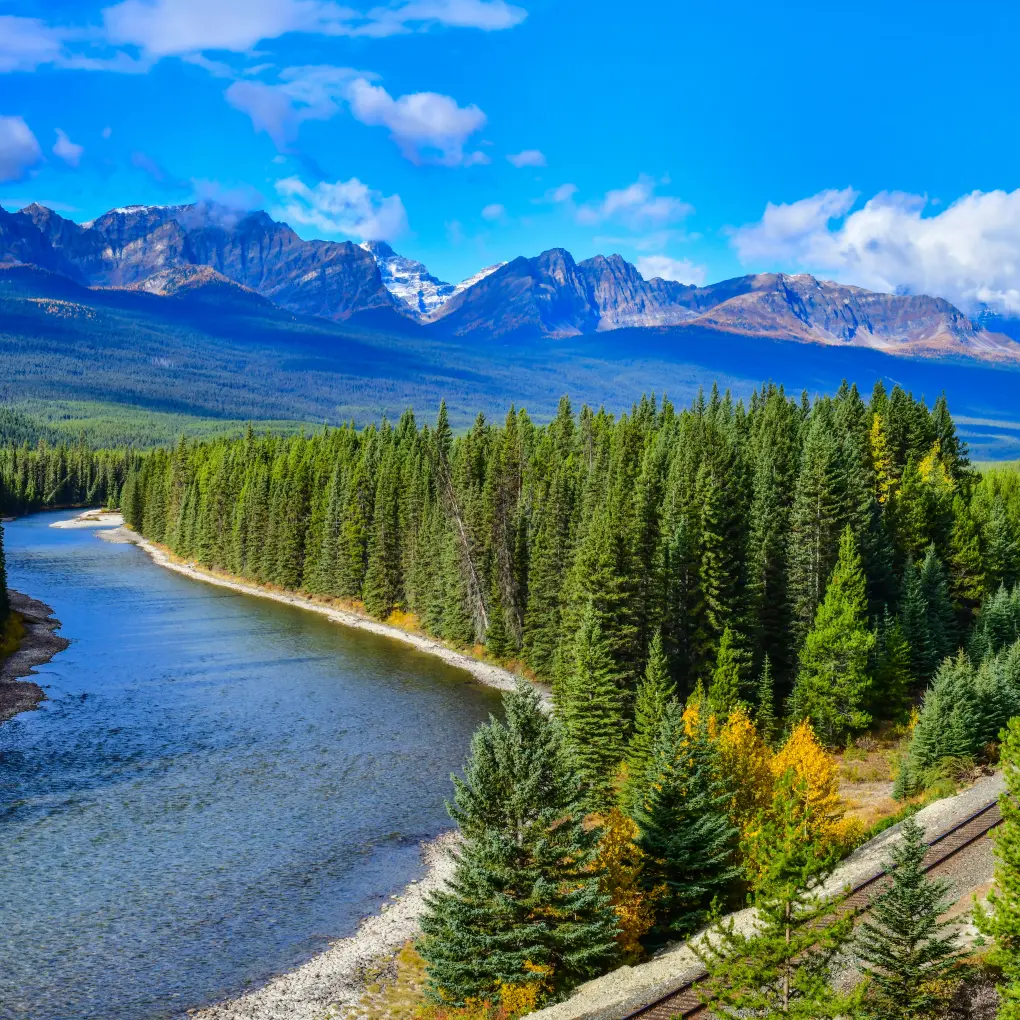Canada’s wilderness is big and beautiful, and the country is blessed in that some of the world’s most spectacular animals call it their home.
If you have always dreamt of seeing a polar bear, grizzly bear or killer whale, you can on a Canadian holiday; the fascinating wildlife of Canada is just one reason why it’s such as popular holiday destination.
Here we guide you through just some of the wildlife you could come across on your holiday.
Polar Bears

On the western shore of Hudson Bay it is easy to forget that the polar bear is endangered. These magnificent animals descend on Churchill and the surrounding area, which is why Churchill is regarded as the polar bear capital of the world.
Polar bears are incredible animals and are the only bear to be considered a marine mammal because they depend so much on the marine environment for survival. The polar bear is the largest land carnivore in North America and can often weigh between 400-600kg.
There are a variety of ways to see these magnificent animals. The 5-day Churchill and Polar Bear Experience Adventurer tour is one great way to get up close and personal with these majestic bears.
The Tundra Buggy Adventure excursion, which is part of our trip, is the best and safest way to see the majestic polar bear in its natural environment. Tundra Buggy Tours can take up to 40 people and visitors will have the opportunity to explore the open tundra while expert tour guides discuss the different wildlife in the Churchill area.
Whales

Canada is prime territory to go whale watching, with over 30 species roaming the 202,000 km of coastline.
These giants of the sea are spectacular and British Columbia is a brilliant location to spot a variety of different whales.
Canada’s waters are so abundant with whales that whale sightings on Eagle Wing Tours, a 100% carbon-neutral whale-watching company, from May-October are a staggering 98%. Visitors can see wild killer whales in their natural environment as resident (fish-eating) killer whales spend their summers in the Salish Sea eating Chinook salmon, while Bigg's (mammal-eating) killer whales can be seen in British Columbia year-round.
Wild Whales Vancouver, who offer 3-7 hour whale watching trips that depart from Granville Island, said that as well as killer whales there are a variety of other whale species you can see.

Humpback whales have made an extraordinary comeback over the past few years and now spend their summers in Canada’s waters. Minke whales are often spotted on a daily basis. If that’s not enough, then wildlife lovers can also see fin whales and gray whales.
Smaller cetaceans such as harbour porpoise, Dall's porpoise, harbour seals, harp seals, hooded seals, elephant seals, Steller and California Sea Lions can also be seen in the waters of Canada. In the Estuary and Gulf of St. Lawrence in Quebec, for example, around 2,000 harbour seals, 3,000 grey seals and 600,000 hooded seals can be found, while about 6.8 million harp seals can be found in the Eastern Atlantic.
Grizzly Bears and Black Bears

Grizzly bears, officially named brown bears, are one of the most iconic symbols of the wild and their concave faces, hump on their shoulders and long claws make them very distinctive.
Grizzlies get their name from the long guard hairs on their backs and shoulders, as the white tips give the bears a “grizzled” look. Generally the bears are dark brown, although sometimes they have light cream or black fur.
One of the best ways to see grizzly bears is on our Bear and Wildlife Watching tour at Knight Inlet Lodge.
The Knight Inlet Lodge is located north of Campbell River in British Columbia and being the “Salmon Capital of the World” the area is home to one of the largest concentrations of grizzly bears in the world.

Glendale Cove, where the lodges are located, is also home to black bears, the smallest of the three bears found in North America. These animals often have black fur, although black bears with white-bluish fur, known as Kermode bears, can also be found in British Columbia and are the only place in the world they can be seen.

Black bears eat plants, fruits, honey, insects, salmon, young deer, moose calves and other small mammals.
Moose

An iconic animal in Canada, the largest member of the deer family is the king of the forests of Canada.
Le Quebec Maritime, the tourism association for the Eastern part of the Quebec province, said the moose population has reached an exceptional density in the Matane Wildlife Reserve, where a moose interpretation centre and a wide range of observation and interpretive activities introduce visitors to this unique animal.
Male moose are recognisable because of their huge antlers, which can spread a jaw-dropping six feet wide. Moose’s long faces and muzzles that dangle over their chins also make this animal very distinguishable.
Moose prefer to eat higher grasses and shrubs because lowering their heads can be tough, therefore pinecones are a very popular food. However, an interesting fact is that moose can swim underwater to eat aquatic plants like water lillies.
Despite their laid-back nature and appearance, moose can actually run up to 35 miles per hour and will become aggressive if they feel threatened.
White-tailed deer

White-tailed deer can be found across most of Canada, but the largest population lives on Anticosti Island (in Côte-Nord).
Introduced in 1896 by Henri Menier, who owned Anticosti at the time, white-tailed deer have now reached a population of 166,000 animals on a territory of about 7900 km² (3100 sq. mi.) with a human population of 300!
Caribou

Caribou, also known as reindeer, feed on the abundant grasses and plants of the tundra. An adult caribou can eat 12 pounds of food each day.
Surprisingly caribou are the only deer where male and females both have antlers. Gaspésie National Park is home to the only caribou herd south of the St. Lawrence. A population of over 400,000 caribou also lives in the Fermont area, in Côte-Nord.
Birds

There are millions of bird species found in Canada. Visitors can see the likes of northern gannets, Atlantic puffins and common eiders in the maritime regions of Québec.
Arguably the most famous bird that lives in Canada is the bald eagle. The dark brown feathers on its body and white feathers on its head, as well as their yellow beaks, make this bird of prey one of the most beautiful birds in the country.
Bald eagles are a type of fish eagle and if you are specifically on the lookout for these magnificent birds then the best places to see them are by rivers and by the sea.
The lakes and forests of Canada are home to plenty of other birds, like the albatross, golden eagle, the peregrine and prairie falcons, the northern gannet, the Canada goose, the northern mockingbird, the common nighthawk, the woodpecker and the tundra swan, to name just a few.
Fish, saltwater and freshwater species

Canada’s maritime regions are full of fish and its rivers and lakes provide rich habitats for a variety of aquatic life.
For example, some of the saltwater fish and crustaceans that can be found in Canada include snow crab, lobster and northern shrimp, as well as mackerel, herring and halibut. The Le Quebec Maritime organisation says that American eel is still fished commercially today, while freshwater species such as Atlantic salmon are found in abundance in Matane in Quebec.
If you are still looking for your aquatic fix, then head to Ripley's Aquarium of Canada in Toronto, where you can see over 16,000 marine animals, including green sea turtles. The aquarium also boasts 57 live exhibits, over 100 interactive displays and four touch pools.
The Dangerous Lagoon at Ripley’s Aquarium features 17 sharks, including sand tiger, sandbar and nurse sharks.
Wolves

The largest wild member of the dog family is the wolf and whilst British Columbia is well-known for being a popular destination for Canada ski holidays and breaks, it is also an established habitat for wolves. Labrador, the Yukon Territory and the Northwest Territories of Canada are also home to wolves.
Wolves are legendary because of their spine-tingling howl and their pack mentality. They live and hunt in packs, usually consisting of six to 10 animals.
Wolves can easily travel 12 miles in a single day as they stalk large animals like deer and moose.
Bison

Although symbolic with the Great Plains in the US, Canada is home to a large population of bison, or buffalo as they are commonly known.
These formidable beasts stand 5-6.5 feet tall and can often tip the scales at 907 kilograms. Although they are huge, they can reach speeds of up to 40 miles per hour.
Bison mainly feed on plains grasses, herbs, shrubs and twigs and can mainly be seen in very large herds during the summer mating season.
To spot them visitors should head to northeast British Columbia, northwest Saskatchewan and the Northwest Territories.
Cougars

The second largest wild cat in the Americas is the cougar. It can be found in western Canada and has been seen across the prairies of southern Ontario, Quebec and New Brunswick.
Despite being seen in prairies, the cougar often calls rocky mountains and dark forests its home. The fearsome predator has a field vision that spans 130 degrees and has been known to kill animals four times its size due to its fantastic ability to stealthily track its prey.
The cougar has small rounded ears, red, grey or brown fur, a long tail with a black tip, white fur on its belly, chest and throat and has very large front paws.
Image Credit: Dave Allcorn, Richard Day, Eagle Wing Tours, Wild Whales Vancouver, Knight Inlet Lodge.
Latest Articles

Things you didn't know about Toronto


14/10/2025
Located along Lake Ontario’s northwest shore, the city of Toronto is the capital of Ontario and is known for its dynamic nature, exciting attractions, and green spaces.

A Guide to Exploring Atlantic Canada


09/10/2025
Atlantic Canada, with its breathtaking coastlines, charming fishing villages, and vibrant culture, offers a holiday experience you’ll never forget. This stunning region, made up of four unique provinces, is a treasure trove of natural wonders and warm, welcoming people.

Why Holland America Line is Your Perfect Cruise Choice


29/09/2025
Choosing the right cruise line can make or break your holiday experience. Holland America Line stands out as the premium choice for discerning travellers who want more than just a typical cruise experience.

A Complete Guide to Ontario’s Top 6 Must-See Destinations


27/08/2025
From world-renowned attractions to hidden wilderness gems, Ontario offers adventures that cater to every type of traveller.












